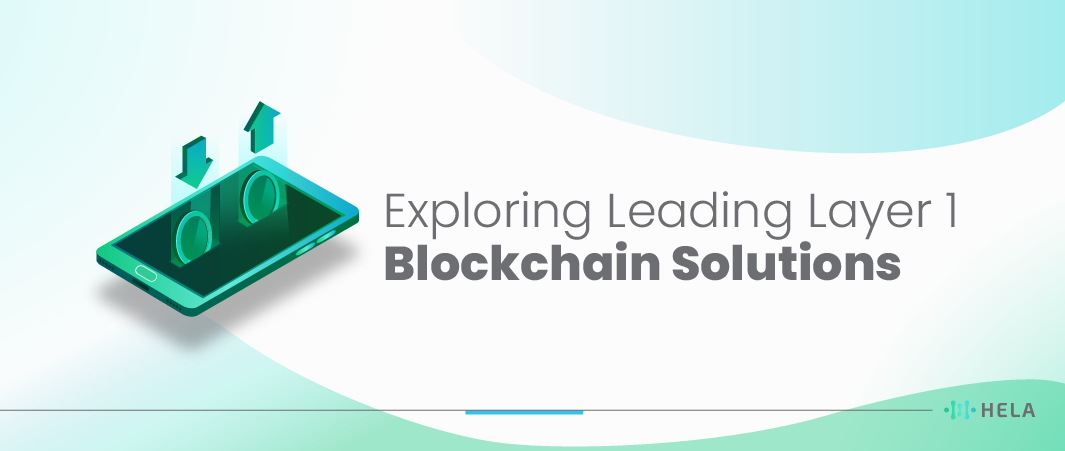Welcome to the fascinating world of blockchain technology! If you’re here, you’re probably curious about the buzzword “Scalable Layer 1”. In the rapidly evolving landscape of blockchain, understanding Layer 1 and its scalability is crucial. This article aims to demystify the concept and provide you with a comprehensive understanding of Layer 1 scaling solutions.
Blockchain technology has been a game-changer in the digital world, offering decentralization, security, and transparency. However, as it grows, so does the need for scalability. That’s where Scalable layer 1 come into play. Let’s dive in and explore this intriguing aspect of blockchain technology.
What is a Blockchain Layer 1?

The term “Layer 1” refers to the underlying main blockchain architecture. In other words, it’s the foundational protocol that the blockchain is built upon. Bitcoin, Ethereum, and other cryptocurrencies are all examples of Layer 1 blockchains. This layer is responsible for maintaining the network’s consensus algorithm, which validates and records transactions.
Layer 1 is the bedrock of any blockchain network. It’s the protocol that ensures all transactions are securely and permanently recorded on the blockchain. It’s also the layer that provides the network’s inherent security and decentralization features. However, as secure and robust as Scalable layer 1 might be, it’s not without its limitations.
Also Read : 12 Best Blockchain Node Providers to Watch in 2023
The primary limitation of Layer 1 is its scalability. As the number of transactions on the network increases, the time it takes to validate and record these transactions also increases. This can lead to slower transaction times and higher fees, which can be a significant drawback for users.
How do Layer 1 Scaling Solutions Work?

Scalable layer 1 aim to improve the scalability of the blockchain without compromising its decentralization or security. There are several ways to achieve this, and different blockchains may employ different methods.
1. Sharding
Sharding is a technique that involves breaking down the blockchain into smaller pieces, known as “shards.” Each shard is capable of processing its own transactions and smart contracts. This means that transactions can be processed in parallel, rather than sequentially, significantly increasing the network’s throughput. Sharding is a complex process and requires careful management to ensure that all shards remain secure and that transactions across shards can occur seamlessly.
2. Consensus Mechanism Upgrades
The consensus mechanism is a crucial part of any blockchain network. It’s the method by which transactions are validated and added to the blockchain. By upgrading the consensus mechanism, a blockchain can potentially process transactions more quickly. For instance, Ethereum is transitioning from a Proof of Work (PoW) consensus mechanism to a Proof of Stake (PoS) mechanism, which is less resource-intensive and can therefore validate transactions more quickly.
3. Block Size and Block Time Optimization
The size of a block (i.e., the number of transactions that can fit into a single block) and the time it takes to create a block can both have a significant impact on a blockchain’s scalability. By increasing the block size, a blockchain can process more transactions at once. Similarly, by decreasing the block time, blocks can be added to the blockchain more quickly. However, these changes must be made carefully, as they can have implications for the security and decentralization of the network.
4. Off-Chain Transactions
Some Layer 1 scaling solutions involve processing transactions off the main blockchain. These off-chain transactions are processed separately and then added to the blockchain as a single transaction. This can significantly reduce the load on the network and increase its capacity. However, it’s important to note that off-chain transactions may not have the same level of security as on-chain transactions.
5. Rollups
Rollups are a Layer 1 scaling solution that involves rolling up many transactions into a single one. There are two main types of rollups: zk-Rollups and Optimistic Rollups. Both types involve processing transactions off-chain and then submitting a cryptographic proof to the main blockchain. This proof verifies the validity of all the bundled transactions. This method can significantly increase the number of transactions that can be processed per second.
6. Cross-Chain Interoperability
This involves enabling different blockchains to communicate with each other, allowing transactions to be spread across multiple networks. This can significantly increase scalability by leveraging the combined capacity of multiple blockchains. However, this requires complex protocols to ensure secure and seamless communication between different blockchains.
Layer 1 Key Features

Scalable Layer 1, also known as the base layer, is the foundational protocol of a blockchain. It’s the core layer where all the network’s transactions are processed and recorded. Here are some key features of Layer 1:
1. Decentralization
One of the most significant features of Layer 1 is decentralization. This means that no single entity or authority has control over the entire network. Instead, control is distributed among all participants in the network, each of whom has equal authority. This decentralization is a fundamental aspect of blockchain technology, providing security, transparency, and resilience against attacks.
2. Consensus Mechanism
Layer 1 is responsible for the network’s consensus mechanism. This is the method by which all transactions are verified and agreed upon by the network. Common consensus mechanisms include Proof of Work (PoW) and Proof of Stake (PoS), each with its own advantages and disadvantages. The consensus mechanism is crucial for maintaining the integrity and security of the blockchain.
3. Transaction Processing
All transactions on the blockchain are processed at Layer 1. This includes everything from simple transfers of cryptocurrency to the execution of complex smart contracts. The speed and efficiency of transaction processing at Layer 1 are critical factors in the overall performance of the blockchain.
4. Security
Layer 1 provides the fundamental security of the blockchain. This includes cryptographic security, which ensures that transactions cannot be tampered with once they have been recorded on the blockchain. It also includes network security, which protects the network from attacks such as double-spending or 51% attacks.
5. Smart Contracts
On some blockchains, Layer 1 is also where smart contracts are executed. Smart contracts are self-executing contracts with the terms of the agreement directly written into code. They automatically execute transactions when their conditions are met, without the need for a middleman.
6. Scalability
Layer 1’s design and configuration significantly impact the blockchain’s scalability. Factors such as block size, block time, and consensus mechanism all play a role in determining how many transactions the blockchain can process per second. As such, improving Layer 1 scalability is a major focus of ongoing blockchain research and development.
7. Interoperability
Some Layer 1 solutions are designed with interoperability in mind, meaning they can communicate and interact with other blockchains. This allows for a variety of cross-chain interactions, such as asset transfers, data sharing, and cross-chain smart contracts.
8. Tokenization
Layer 1 is also where assets are tokenized on the blockchain. This can include cryptocurrencies, but also other types of assets, such as real estate, stocks, or commodities. Tokenization allows these assets to be easily transferred and traded on the blockchain.
What’s Next for Layer 1?
Despite the challenges, the future of Layer 1 scaling solutions looks promising. With ongoing research and development, new and improved Layer 1 scaling solutions are continually being proposed and tested.
Also Read : How to Build dApp? Tips and Tutorial
Furthermore, the development of cross-chain interoperability could allow for transactions to be processed across multiple blockchains, further enhancing scalability. This could open up new possibilities for decentralized applications and could lead to the next evolution of the blockchain.
In the end, the goal is to create a scalable, secure, and decentralized blockchain that can handle the increasing demand for decentralized applications and services. While there is still much work to be done, the progress made so far is encouraging.
Conclusion
In conclusion, layer 1 are a critical component in the evolution of blockchain technology. They hold the key to overcoming the scalability issues that currently limit the potential of blockchain. While there are challenges to overcome, the future of Layer 1 scaling solutions is bright, with new developments and improvements on the horizon.
As we continue to explore the potential of blockchain technology, understanding concepts like Layer 1 and its scalability becomes increasingly important. We hope this article has shed some light on the subject and sparked your curiosity to learn more. After all, in the ever-evolving world of blockchain, there’s always something new to discover!
Disclaimer : The information provided by Hela Labs in this article is intended for general informational purposes and does not reflect the company’s opinion. It is not intended as investment advice or recommendations. Readers are strongly advised to conduct their own thorough research and consult with a qualified financial advisor before making any financial decisions.

I am Carina Caringal, a technical writer specializing in blockchain engineering concepts, decentralized systems, crypto infrastructure, and Web3 technologies. My work focuses on analyzing and translating complex technical mechanisms into precise, structured, and insightful content for both developers and non-technical readers who want a deeper understanding of the decentralized ecosystem.
My background in blockchain and cryptocurrency is rooted in years of independent research, continuous learning, and hands-on exploration across multiple protocols and network architectures. I study the underlying mechanics of distributed ledger technology, from consensus algorithms and smart contract logic to network scalability, security models, cryptographic principles, and interoperability frameworks. This technical foundation shapes the way I approach every article, ensuring accuracy, depth, and relevance.
- Carina Caringalhttps://helalabs.com/blog/author/carina-caringal/
- Carina Caringalhttps://helalabs.com/blog/author/carina-caringal/
- Carina Caringalhttps://helalabs.com/blog/author/carina-caringal/
- Carina Caringalhttps://helalabs.com/blog/author/carina-caringal/

